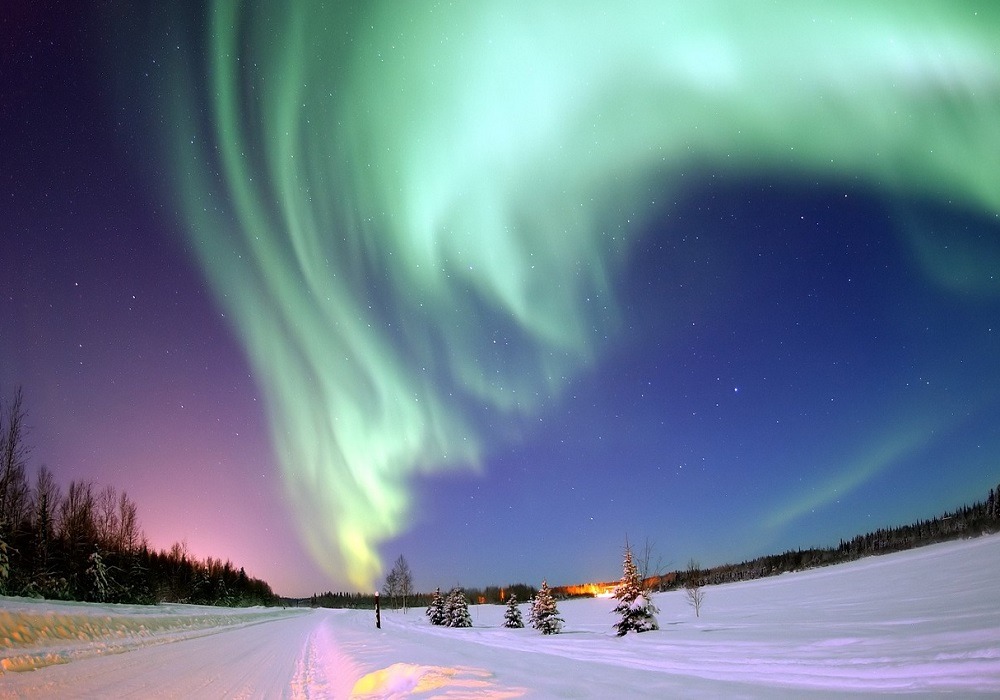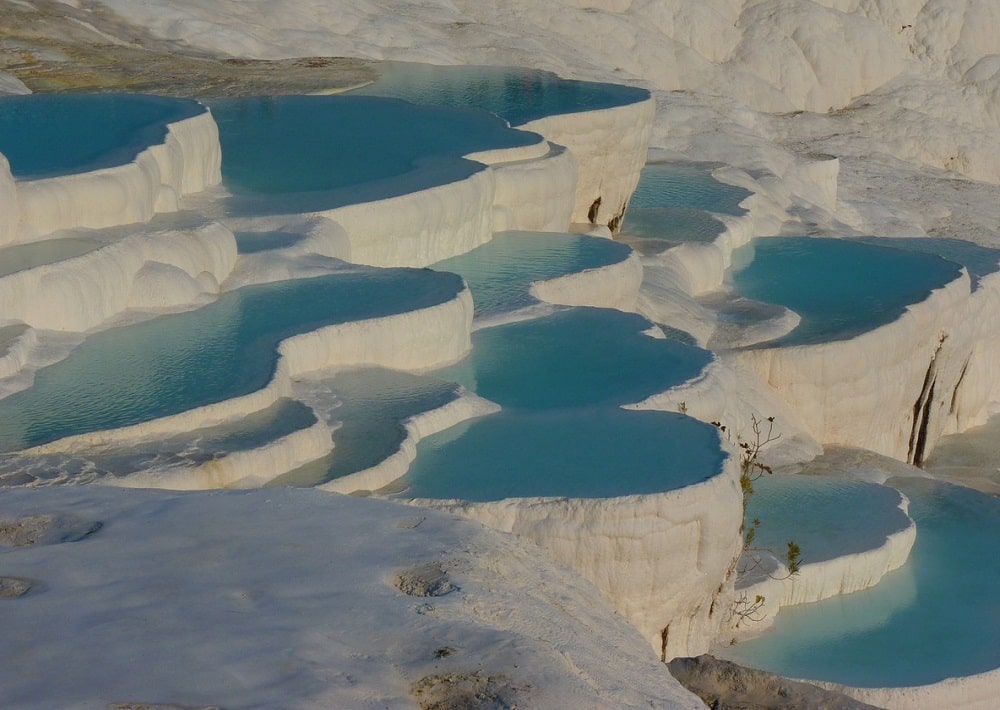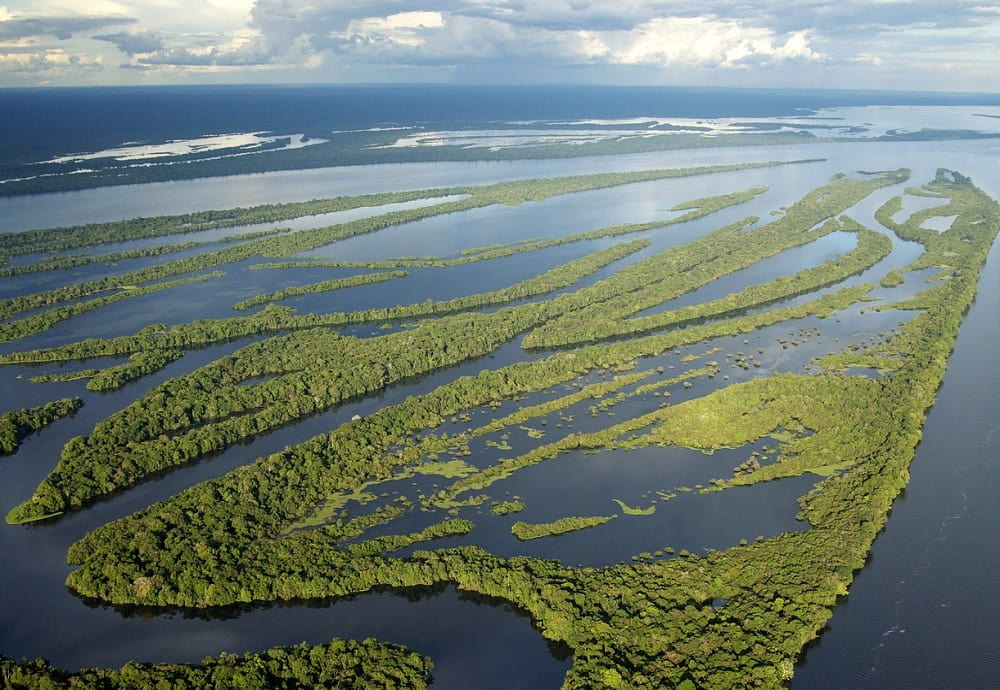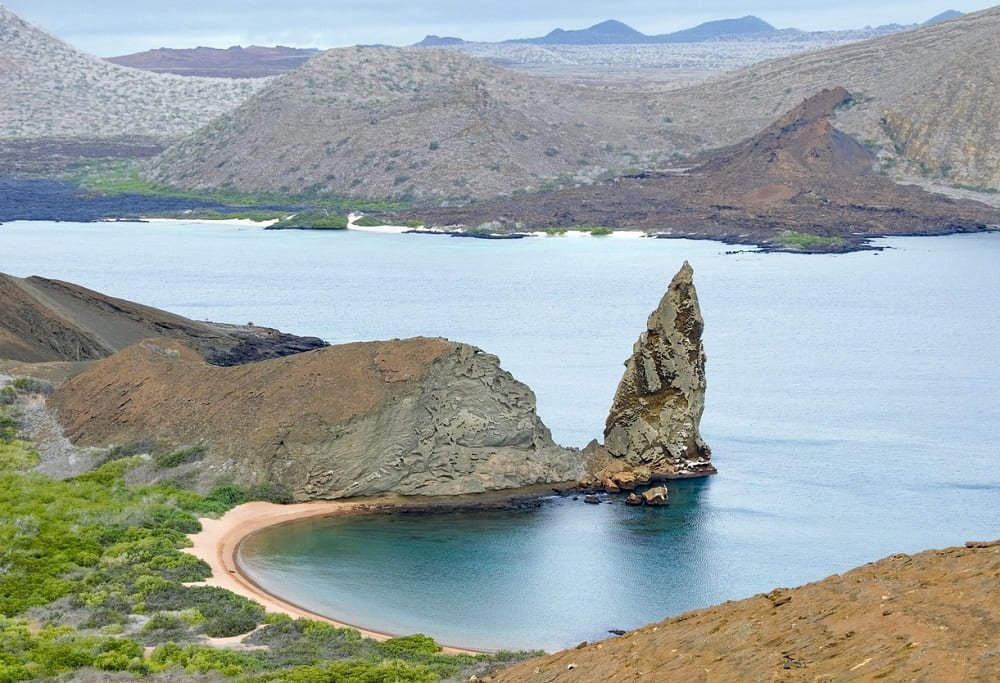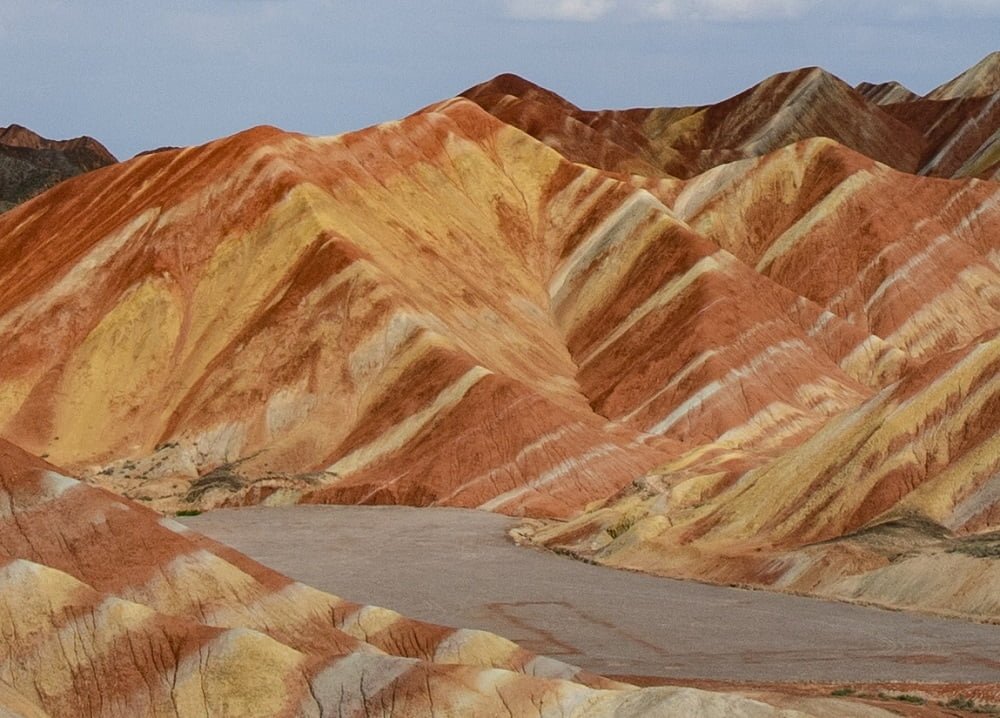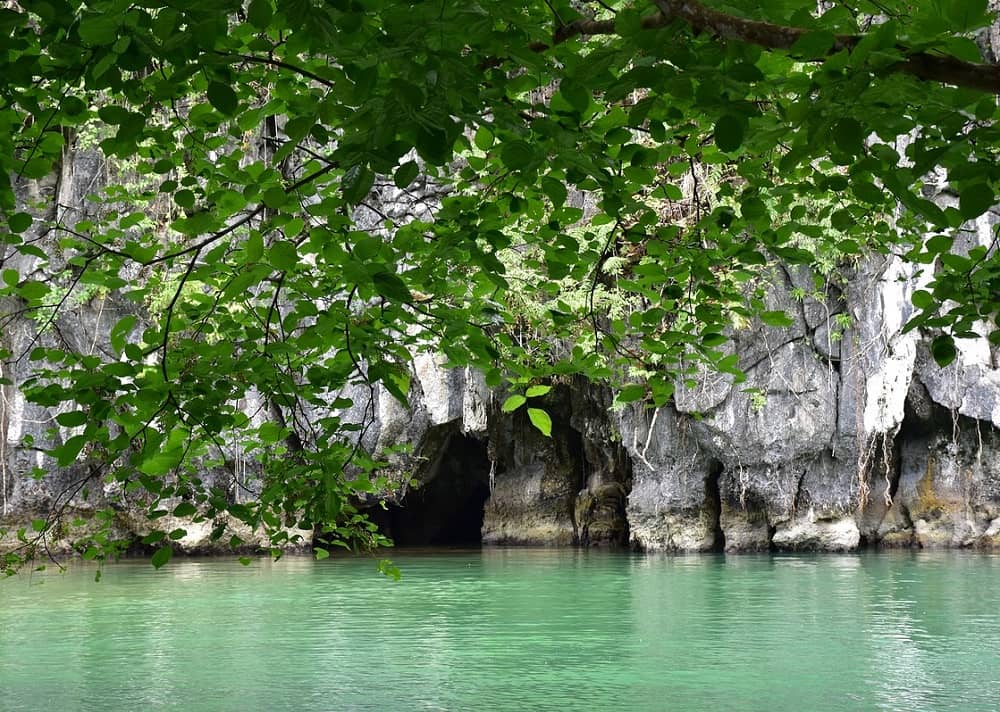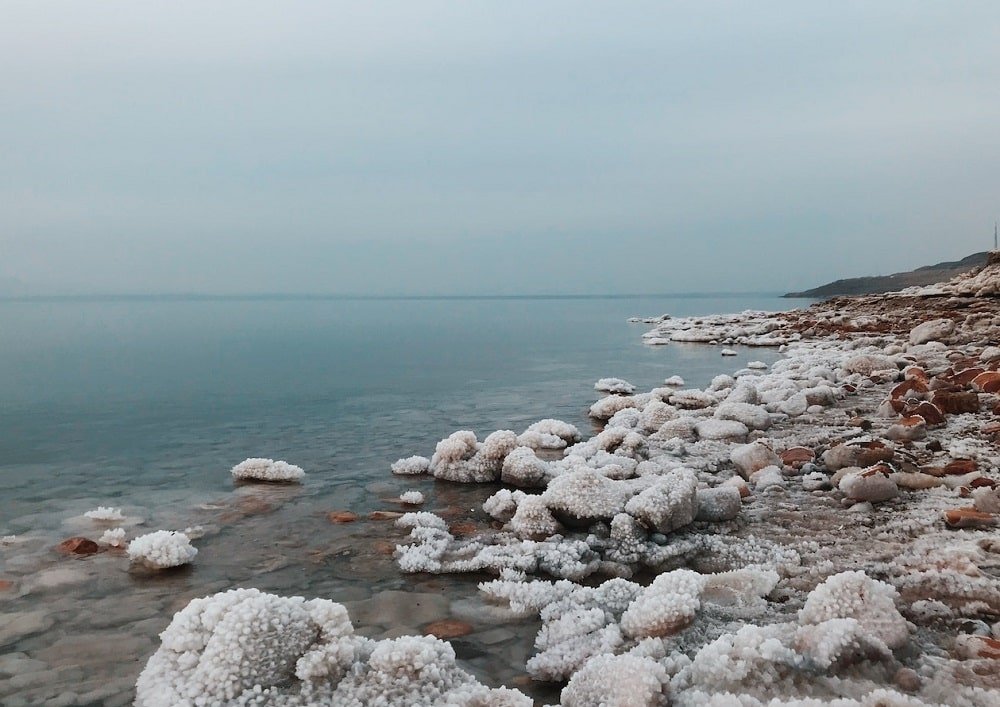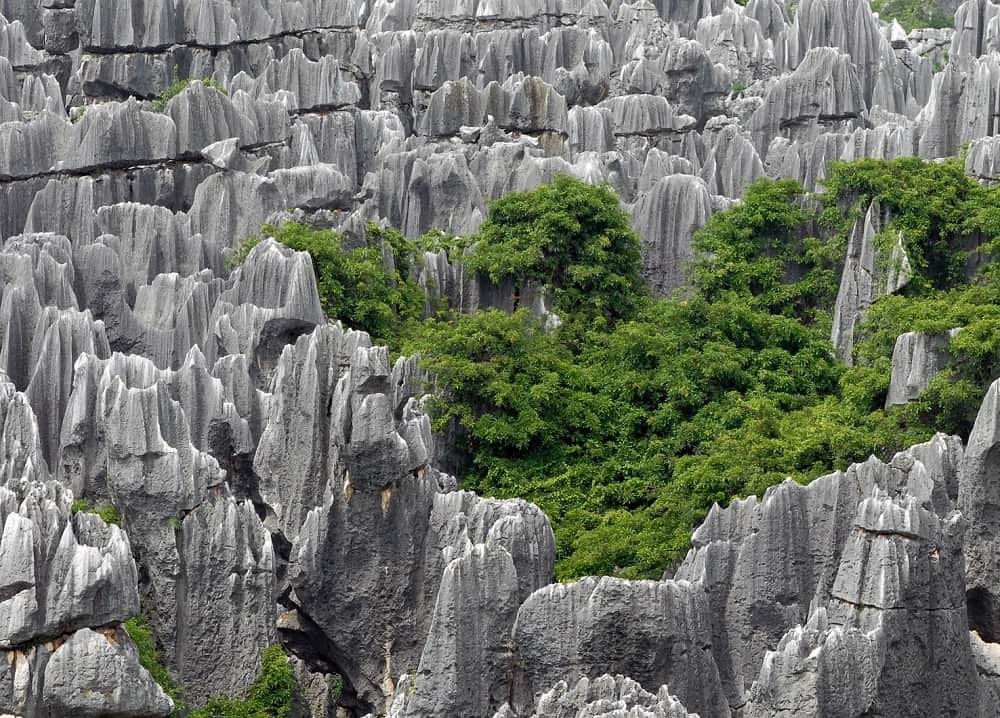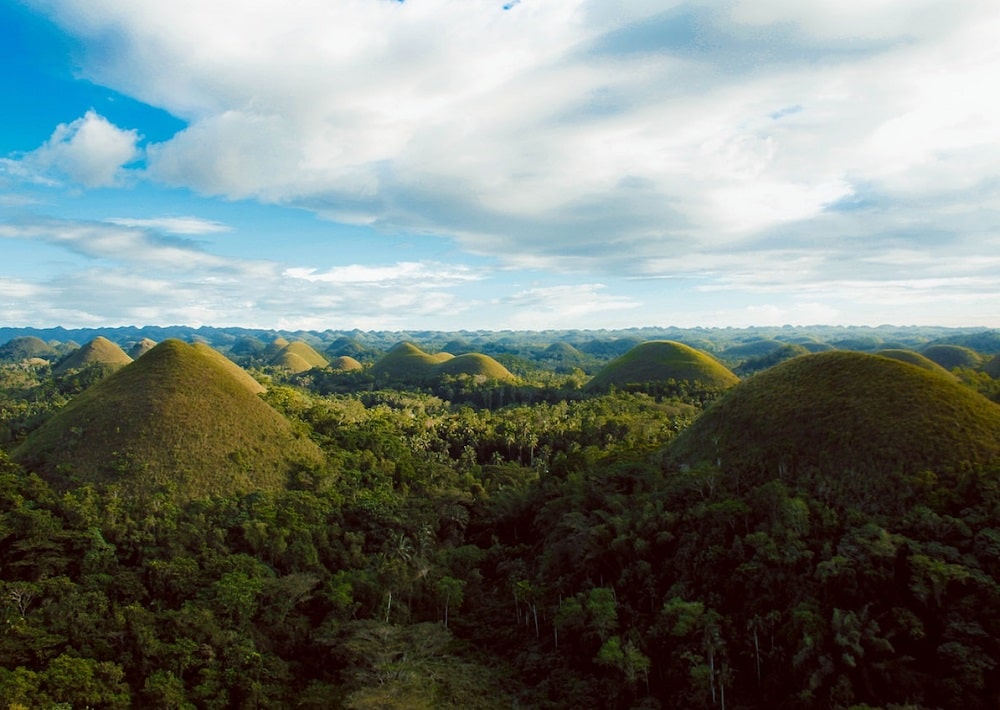20 Most Fascinating and Interesting Things in the World
Last Updated on 14th April 2023 by admin
There are so many fascinating and interesting things in the world that it’s hard to know where to begin. From natural wonders to man-made creations, from cultural traditions to scientific discoveries, there is an endless array of things that capture our imagination and inspire us to learn more about the world around us. In this article, we will explore 20 most interesting things in the world. This virtual journey will be memorable for you, then let’s start with some of the cool things in the world:
1) The Great Barrier Reef, Australia
The Great Barrier Reef is one of the world’s most spectacular natural wonders, lies in the Coral Sea off the coast of Queensland in northeastern Australia. The Great Barrier Reef is made up of thousands of individual reefs and islands. This Reef is so large that it can be seen from space and is believed to be over 500,000 years old.
Interesting facts about the Great Barrier Reef:
- The Great Barrier Reef is the world’s largest coral reef system, extending over 2,300 km and covering an area of over 344,400 square kilometers (133,000 sq mi).
- The Great Barrier Reef is made up of over 2,900 individual reefs and 900 islands.
- There are over 1,500 species of fish, 600 species of coral and thousands of other marine species.
- The Great Barrier Reef is a UNESCO World Heritage Site and is considered one of the Seven Natural Wonders of the World.
- The reef is not only famous for its vastness and beauty, but it also provides important ecological functions such as protecting the shoreline from storms and erosion. It is also supporting the livelihoods of millions of people through fishing and tourism.
2) The Blue Lagoon, Iceland
The Blue Lagoon is a geothermal spa located in Iceland. It is fed by a nearby geothermal power plant and is renowned for its milky blue waters and therapeutic properties. The Blue Lagoon is a popular tourist destination and is one of Iceland’s most famous attractions. The Blue Lagoon is one of Iceland’s most popular attractions and offers visitors the opportunity to bathe in the warm, mineral-rich waters while surrounded by the rugged and otherworldly landscape of Iceland.
Interesting facts about the Blue Lagoon in Iceland:
- The water in the Blue Lagoon is heated by geothermal energy and is naturally rich in minerals like silica and sulfur. Many people believe that the water has healing properties for skin conditions like psoriasis.
- The water in the lagoon is a milky blue color due to the high concentration of silica, which also gives the water a silky texture.
- The lagoon was formed accidentally in 1976 during the construction of the nearby geothermal power plant. The warm water from the plant was pumped into the lava field, creating the lagoon.
- The water in the Blue Lagoon is a unique shade of blue because of the way it reflects sunlight and the minerals in the water.
- The Blue Lagoon is a popular tourist attraction, and visitors can enjoy soaking in the warm waters, relaxing in saunas and steam rooms, and getting spa treatments like massages and facials.
3) The Catacombs, Paris, France
The Catacombs of Paris are an underground labyrinth of tunnels and chambers that contain the remains of over six million people. The Catacombs of Paris are one of the unique and interesting things from around the world, that offer visitors an unforgettable experience, and it is one of famous tourist attractions in Paris. Visitors can explore the maze-like network of tunnels and chambers, which are adorned with human bones and skulls arranged in intricate patterns.
Interesting facts about the Catacombs of Paris:
- The Catacombs of Paris was created in the late 18th century to solve the problem of overcrowded cemeteries in the city.
- The tunnels were formed from old limestone quarries and extend for over 300 kilometers (186 miles) throughout the city, only a small portion of the tunnels are open to the public.
- The Catacombs of Paris contain the remains of over 6 million people. During the late 18th century, the remains of the dead were transferred to the Catacombs from cemeteries all over Paris.
- The bones in the Catacombs are arranged in patterns and designs, including crosses, hearts, and other shapes.
- The Catacombs of Paris have a rich history and have been used for various purposes over the years, including as a hiding place for the French Resistance during World War II and as a location for underground parties and concerts.
- The tunnels are also home to various legends and stories, including tales of ghosts and mysterious occurrences.
4) The Northern Lights
The Northern Lights (Aurora Borealis) is a natural light display that occurs in the polar regions. It is one of the most interesting things to happen on our planet, and it amazes everyone who sees it for the first time. The lights are caused by the interaction of charged particles from the sun with the Earth’s magnetic field, and they produce a stunning display of colors and patterns in the night sky.
Interesting facts about the Northern Lights:
- The lights are caused by charged particles from the sun colliding with atoms and molecules in the Earth’s atmosphere, which produces colorful displays of light in the sky.
- The colors of the Northern Lights depend on the type of gas particles that are being excited in the atmosphere. For example, green is the most common color and is produced by excited oxygen molecules.
- The Northern Lights can be seen in countries like Norway, Sweden, Finland, Iceland, Canada, and Alaska.
- The Northern Lights have been a subject of fascination for thousands of years, with many cultures creating myths and legends around them. Some believed that the lights were the spirits of the dead or signals from the gods.
- The Northern Lights can also have an impact on the Earth’s magnetic field and disrupt communication and navigation systems, especially for airplanes and satellites.
5) Pamukkale, Turkey
Pamukkale, meaning “cotton castle” in Turkish, is a unique natural wonder located in the Denizli Province of Turkey. The site is famous for its spectacular terraced hot springs, formed by the deposition of calcium carbonate-rich water flowing from hot springs on the nearby hills. The white travertine terraces, which resemble a frozen waterfall, are a breathtaking sight and have been a famous tourist attraction for centuries.
Interesting facts about Pamukkale:
- The terraces are formed by mineral-rich hot springs that flow down the hillside and leave behind deposits of calcium carbonate.
- Visitors can bathe in the thermal pools that have been used for thousands of years for their therapeutic properties. The water temperature in the pools is around 35°C (95°F).
- Pamukkale is also home to the ancient Greco-Roman city of Hierapolis, which was founded in the 2nd century BCE. The ruins of the city include a well-preserved theater, a large necropolis, and a grand gate.
- In ancient times, Hierapolis was famous for its thermal baths and was considered a healing center. Visitors can still see the ruins of the Roman baths, including the grand pool that was used for swimming and exercise.
- Pamukkale is a UNESCO World Heritage Site and attracts thousands of visitors each year who come to experience its natural beauty and historical significance.
6) The Amazon Rainforest
The Amazon Rainforest is one of the most important natural resource regions in the world, its covers over 2 million square miles and is home to countless species of animals, including jaguars, anacondas, and sloths. The rainforest also plays a critical role in regulating the Earth’s climate, as it absorbs massive amounts of carbon dioxide and produces oxygen. The Amazon Rainforest is a unique and important ecosystem that supports an incredible amount of biodiversity and plays a crucial role in regulating the planet’s climate.
Interesting facts about the Amazon Rainforest:
- The Amazon Rainforest is one of the most biodiverse regions in the world, with over 40,000 plant species, 1,300 bird species, and 2.5 million insect species.
- The Amazon Rainforest is the largest rainforest in the world, covering an area of approximately 6.7 million square kilometers (2.7 million square miles) across nine countries in South America.
- The rainforest is home to an estimated 10% of the world’s biodiversity, with millions of plant and animal species, many of which are still undiscovered.
- The Amazon River, which runs through the rainforest, is the largest river in the world by volume and is responsible for approximately 20% of the world’s freshwater supply.
- The rainforest is often referred to as the “lungs of the planet” because it produces over 20% of the world’s oxygen.
- Scientists estimate that the Amazon Rainforest is home to over 400 indigenous tribes, many of which have not yet had contact with the outside world.
7) The Mona Lisa
The Mona Lisa, also known as La Gioconda, is one of the most famous paintings in the world and is widely considered to be a masterpiece of Renaissance art. This unique masterpiece was painted by the Italian artist Leonardo da Vinci in the early 16th century, the painting is a portrait of a young woman believed to be Lisa Gherardini, a Florentine noblewoman. The painting is housed in the Louvre Museum in Paris, the largest museum in the world, where it attracts millions of visitors every year.
Interesting facts about the Mona Lisa Painting:
- The Mona Lisa is a portrait painting by the Italian artist Leonardo da Vinci, completed in the early 16th century.
- The painting is relatively small, measuring only 77 x 53 cm (30 x 21 inches).
- The Mona Lisa is painted using a technique called sfumato, which involves the use of subtle shading and blending to create a soft, hazy effect. This technique gives the painting a sense of depth and realism.
- The identity of the subject of the painting has been the subject of much speculation over the years. While most experts agree that it is likely Lisa Gherardini, some have suggested that it could be someone else entirely.
- The painting has been the target of several high-profile theft attempts over the years. In 1911, the painting was famously stolen from the Louvre and was missing for two years before it was recovered.
- Despite its fame, the Mona Lisa is not actually the most valuable painting in the world. That honor currently belongs to a painting called Salvator Mundi, also by Leonardo da Vinci, which sold for $450 million at auction in 2017.
8) The International Space Station
The International Space Station is a marvel of modern technology and engineering. It is a habitable satellite that orbits the Earth and is used for scientific research and experimentation. The space station is approximately the size of a football field and has been continuously inhabited by astronauts since 2000. It is one of the most complex and sophisticated structures ever built, and it represents humanity’s quest for knowledge and exploration beyond our planet.
Interesting facts about the International Space Station:
- The International Space Station (ISS) is a habitable artificial satellite in low Earth orbit. It was launched in 1998 and has been continuously occupied by astronauts and cosmonauts since then.
- The ISS is a joint project between five space agencies: NASA (USA), Roscosmos (Russia), ESA (Europe), JAXA (Japan), and CSA (Canada).
- The ISS is the largest human-made object in space and is roughly the size of a football field. It orbits the Earth at an altitude of approximately 408 kilometers (253 miles).
- The ISS has been visited by over 240 people from 19 different countries. Astronauts and cosmonauts stay on the station for extended periods of time, typically six months to a year.
- The ISS is equipped with a range of scientific equipment and experiments, which are used to study everything from the effects of microgravity on the human body to the behavior of materials in space.
- The station is powered by eight solar arrays, which provide a total power output of 84-120 kilowatts. The solar arrays can track the sun to maximize energy production.
- The ISS is protected from space debris and micrometeoroids by its shielding and the use of maneuvering thrusters to avoid collisions.
9) The Galapagos Islands, South America
The Galapagos Islands are a group of volcanic islands located off the coast of Ecuador in South America. They are home to a diverse range of plant and animal species, many of which are found nowhere else on Earth. The islands are famous for their role in Charles Darwin’s theory of evolution and are a popular destination for ecotourism. The Galapagos Islands are a fascinating and unique destination, known for their iconic wildlife, important scientific history, and stunning natural beauty.
Interesting facts about the Galapagos Islands:
- The Galapagos Islands are located in the Pacific Ocean, about 1,000 km west of Ecuador. The archipelago is made up of 18 major islands and several smaller ones, and is known for its unique wildlife.
- The islands are famous for inspiring Charles Darwin’s theory of evolution. Darwin visited the Galapagos in 1835 and was struck by the variation in the beaks of finches on different islands, which led him to propose that species could change over time through natural selection.
- The Galapagos Islands are home to a number of endemic species, which means they are found nowhere else in the world. These include the Galapagos tortoise, marine iguana, and Galapagos penguin.
- The islands are also home to a number of other unique and iconic species, including the blue-footed booby, the waved albatross, and the Galapagos sea lion.
- The Galapagos Islands are a protected area, with around 97% of the land area designated as a national park. The islands are also a UNESCO World Heritage site.
10) The Danxia Landform, China
The Danxia Landform is a unique geological formation located in the south-central part of China. It is a series of red sandstone mountains and cliffs that have been shaped by millions of years of erosion and weathering, resulting in their distinctive appearance. The landform covers a large area of approximately 300 square kilometers and is characterized by its vibrant colors, ranging from deep reds and oranges to yellows and blues. Visitors can explore the Danxia Landform through a network of hiking trails and viewing platforms.
Interesting facts about the Danxia Landform:
- The Danxia Landform is a unique type of landscape that is characterized by its colorful rock formations. It is found in several places throughout China, but the most famous and well-known location is in Zhangye National Geopark, Gansu Province.
- The name Danxia comes from the Chinese words “dan” meaning red and “xia” meaning cliff. The name refers to the distinctive red sandstone and other sedimentary rock formations that make up the landscape.
- The rock formations of the Danxia Landform were created over millions of years of erosion and weathering. The rocks are made up of layers of sandstone and other sedimentary rocks that have been tilted, folded, and uplifted by tectonic activity.
- The colorful rock formations of the Danxia Landform are created by the presence of different minerals in the rocks, including iron oxide, which gives the rocks their red color.
- In 2010, the Zhangye Danxia Landform was inscribed on the UNESCO World Heritage List as part of the China Danxia site. It is recognized as a unique and outstanding example of a type of landscape that is found nowhere else in the world.
11) The Underground River, Philippines
The Underground River, also known as the Puerto Princesa Subterranean River National Park, is located in the Philippines on the beautiful island of Palawan. The Puerto Princesa Subterranean River National Park is a UNESCO World Heritage Site located in the Palawan province of the Philippines. The park features a navigable underground river that runs for over 8 kilometers through a cave system. The river is home to a variety of wildlife, including bats and fish.
Interesting facts about the Underground River:
- The river flows through a limestone cave system that stretches for over 24 kilometers, making it one of the longest underground rivers in the world. However, only the first 8.2 kilometers of the river are open to the public.
- The Underground River is home to a variety of unique and rare species of plants and animals, including the Palawan tree shrew, the Palawan hornbill, and the Palawan peacock-pheasant.
- The cave system also features stunning rock formations, including stalactites and stalagmites, that have been formed over millions of years by the flowing water.
- The Underground River is considered a sacred place by the indigenous Tagbanua people, who have lived in the area for thousands of years. They believe that the river is home to spirits and supernatural beings and have long used the area for spiritual rituals and ceremonies.
- Visitors to the Underground River can take a guided boat tour through the cave system, with experienced guides pointing out the unique features and wildlife along the way.
- The Underground River was named one of the New Seven Wonders of Nature in 2012, further cementing its status as a must-see destination for travelers from around the world.
12) The Dead Sea, Israel and Jordan
The Dead Sea is a saltwater lake located between Israel and Jordan. It is the lowest point on Earth, with a surface elevation of over 400 meters below sea level. The high salt content of the water makes it impossible for most forms of marine life to survive, hence the name “Dead Sea.” However, the unique mineral properties of the water have therapeutic benefits for human health, and the area is a popular destination for spa treatments.
Interesting facts about the Dead Sea:
- It is actually a part of the Jordan Rift Valley and is bordered by the Judean Mountains to the west and the Jordanian Mountains to the east.
- The Dead Sea is the lowest point on Earth, with its surface level situated at approximately 430 meters (1,410 feet) below sea level. This makes it the deepest hypersaline lake in the world.
- The high salt concentration of the Dead Sea makes it nearly impossible for any animal or plant to survive in its waters. However, the surrounding desert landscape is home to a variety of unique and hardy species that have adapted to the harsh conditions.
- The salt content of the Dead Sea is also believed to have therapeutic properties, particularly for skin conditions such as psoriasis and eczema. As a result, the region has become a popular destination for medical tourism.
- Despite its name, the Dead Sea is not actually a sea. It is a lake, and it is called the “Dead” Sea because its high salt concentration means that no fish or other marine life can survive in its waters.
- The Dead Sea is also known for its mud, which is rich in minerals such as magnesium, sodium, and potassium. This mud is said to have healing properties and is used in a variety of cosmetic and therapeutic products.
13) The Blue Hole, Egypt
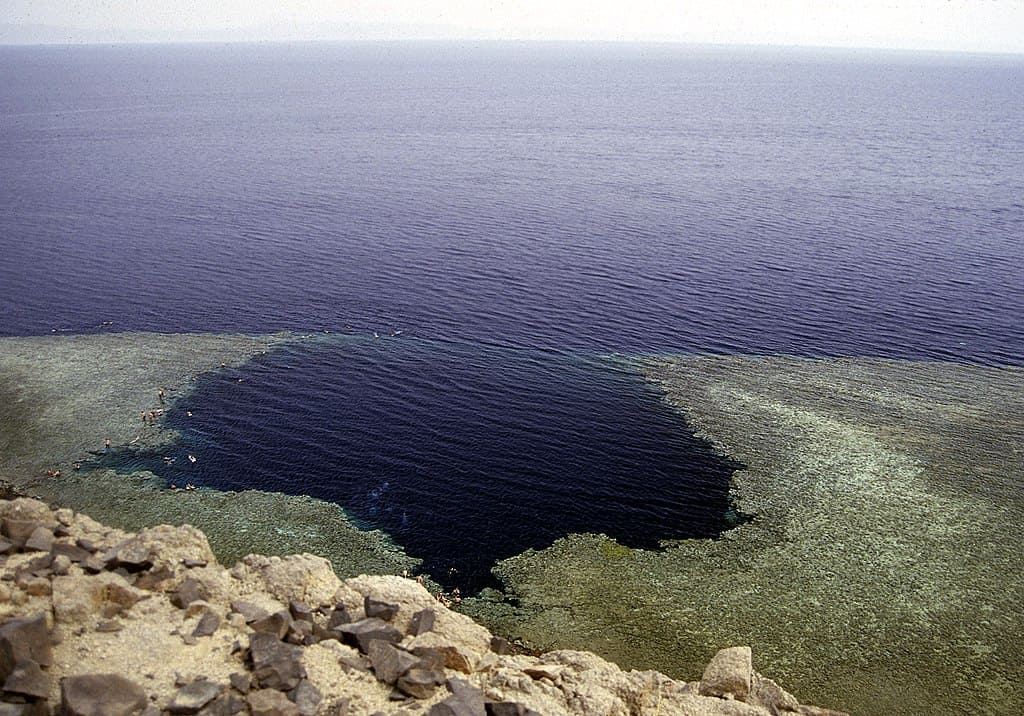
The Blue Hole is a natural underwater sinkhole located in the Red Sea off the coast of Egypt. It is known for its crystal-clear blue water, unique geological formations, and diverse marine life. The Blue Hole is a popular spot for divers, who come from all over the world to explore its depths. However, it is also known as one of the most dangerous dive sites in the world due to the steep. This natural wonder was formed over thousands of years by the erosion of the limestone bedrock that makes up the surrounding area.
Interesting facts about the Blue Hole:
- The Blue Hole is approximately 300 meters (984 feet) in diameter and 125 meters (410 feet) deep. It is a popular destination for divers due to its unique geological formations and the variety of marine life that can be found in and around the sinkhole.
- The Blue Hole was formed during the last ice age, when sea levels were much lower and the area was a large cave system. As the ice melted and sea levels rose, the cave system was flooded and the roof collapsed, creating the sinkhole we see today.
- The Blue Hole is known for its crystal-clear blue waters, which are caused by the depth of the sinkhole and the fact that it is largely cut off from the surrounding ocean.
- Divers who explore the Blue Hole can see a variety of marine life, including reef sharks, barracudas, and sea turtles. The sinkhole is also home to a variety of unique coral formations.
- The Blue Hole was made famous by the legendary explorer Jacques Cousteau, who visited the site in the 1970s and named it one of the top ten diving spots in the world.
- Despite its popularity as a diving destination, the Blue Hole is also considered a dangerous site due to its depth and strong currents. Divers must have advanced training and experience in order to safely explore the sinkhole.
14) The Antikythera Mechanism
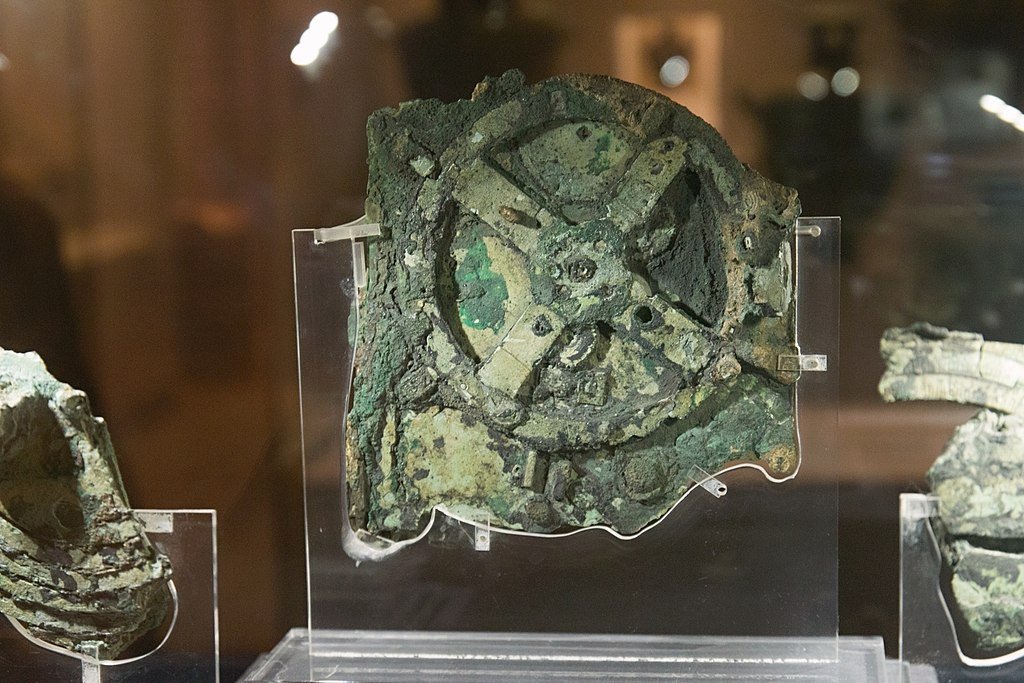
The Antikythera Mechanism is an ancient Greek analog computer that was discovered in 1901 in the Antikythera shipwreck off the coast of Greece. It is believed to have been built in the 2nd century BCE and is the oldest known example of a complex geared mechanism. The Antikythera Mechanism is now housed at the National Archaeological Museum in Athens, Greece. The purpose of the device is not entirely understood, but it is believed to have been used for astronomical calculations.
Interesting facts about the Antikythera Mechanism:
- The device is estimated to have been constructed around 100 BCE, making it the oldest known complex mechanical device in existence.
- The Antikythera Mechanism was designed to predict astronomical positions and eclipses for calendrical and astrological purposes.
- The device was made up of at least 30 bronze gears, with inscriptions on its front and back indicating the positions of the Sun, Moon, and planets in the zodiac.
- The Antikythera Mechanism also included a mechanism for displaying the four-year cycle of athletic events in ancient Greece, including the Olympic games.
- The mechanism was originally housed in a wooden case and operated by turning a hand-crank, which would set the various gears and dials in motion.
- The Antikythera Mechanism was a highly advanced and sophisticated device for its time, and its complexity was not matched until the invention of more advanced mechanical clocks during the Middle Ages.
- The exact function and purpose of the Antikythera Mechanism remained unknown for many years, and it was not until the 1950s that modern scholars were able to fully decipher its complex workings and appreciate its historical significance.
15) The Wave, USA
The Wave is a sandstone rock formation located in the Coyote Buttes North area of the Paria Canyon-Vermilion Cliffs Wilderness in Arizona, USA. The Wave is known for its unique and strikingly beautiful wave-like shape, created by millions of years of wind and water erosion on the sandstone. The unique geological features of the Wave, combined with the patterns and colors of the sandstone, make it a famous attraction for hikers, photographers, and nature lovers from around the world.
Interesting facts about the Wave:
- It is over 400 kilometers long and up to 1.6 kilometers deep. The canyon was formed over millions of years by the erosion of the Colorado River and is considered to be one of the natural wonders of the world.
- The Wave gets its name from the undulating, wave-like patterns in the sandstone that have been eroded over millions of years by wind and water.
- The Wave is a popular destination for hikers and photographers, but access is limited and controlled by a permit system to protect the delicate natural environment.
- The Wave is made up of Navajo sandstone that is over 190 million years old.
- The sandstone formations at The Wave contain a wide range of colors, from deep reds and oranges to subtle shades of pink and yellow.
- The undulating patterns in the sandstone at The Wave are the result of crossbedding, which occurs when sand is deposited in layers and then compacted over time.
16) The Svalbard Seed Vault, Norway

The Svalbard Seed Vault is a secure storage facility located on the Norwegian island of Spitsbergen. It was established in 2008 to safeguard the world’s crop diversity in the event of a global catastrophe. The vault holds over a million seed samples from around the world and is considered to be the ultimate backup for the world’s food supply. It is an important resource for ensuring the long-term survival of the world’s food crops and is a testament to the importance of preserving our planet’s biodiversity.
Interesting facts about The Svalbard Seed Vault:
- The seed vault was established in 2008 as a backup for the world’s seed banks, in case of natural or man-made disasters that could threaten the long-term survival of crops.
- The seed vault is built into a mountain and is designed to withstand natural disasters, such as earthquakes and floods, as well as human-made disasters, such as nuclear war.
- The seed vault is managed by the Norwegian government and is funded by various organizations, including the Bill and Melinda Gates Foundation and the Crop Trust.
- The seed vault currently holds over one million seed samples from around the world, representing over 5,000 different species of crops.
- The seeds are stored in airtight, temperature-controlled containers that are designed to keep them viable for hundreds or even thousands of years.
- The seed vault has been designed to be as self-sufficient as possible, with solar panels providing the majority of the electricity needed to keep the seeds at a constant temperature.
17) The Stone Forest, China
The Stone Forest, also known as Shilin, is a set of limestone formations located in Yunnan Province in southwestern China. It is a vast area of limestone formations, some of which tower over 30 meters high. The formations were created by the erosion of limestone over millions of years, and the resulting landscape is both beautiful and otherworldly. The Stone Forest is a famous tourist destination and has been designated a UNESCO World Heritage Site.
Interesting facts about The Stone Forest:
- The limestone formations are believed to be over 270 million years old and were formed by the gradual erosion of the limestone bedrock over thousands of years.
- The Stone Forest covers an area of over 350 square kilometers and includes various natural landscapes, such as peaks, waterfalls, and underground rivers.
- The Stone Forest is divided into several sections, including the Greater Stone Forest, the Lesser Stone Forest, the Naigu Stone Forest, and the Zhiyun Cave.
- The Greater Stone Forest is the most popular section and features numerous tall, jagged limestone formations that resemble trees, hence the name “Stone Forest.”
- The Lesser Stone Forest is a smaller section that features more delicate limestone formations, including several that resemble animals and other objects.
- The Naigu Stone Forest is located on a mountain peak and is known for its scenic views and unique limestone formations.
- The Zhiyun Cave is an underground river that flows through the Stone Forest and is accessible to visitors by boat.
18) The Nazca Lines, Peru
The Nazca Lines are a series of ancient geoglyphs located in the Nazca Desert in Peru. The lines were created by the Nazca people between 500 BCE and 500 CE and depict various animals, plants, and geometric shapes. The lines are best viewed from the air, and their purpose remains a mystery. The purpose of the lines remains a mystery, but many theories have been proposed, including that they were used for astronomical observations, water management, or religious or ceremonial purposes.
Interesting facts about the Nazca Lines:
- The geoglyphs were created by removing the reddish-brown iron oxide-coated pebbles that cover the surface of the Nazca desert and revealing the lighter-colored earth underneath.
- The Nazca Lines cover an area of approximately 450 square kilometers and consist of over 800 straight lines, 300 geometric shapes, and 70 animal and plant designs.
- The designs range in size from small lines less than 1 meter wide to giant figures over 200 meters wide.
- The most famous designs are the hummingbird, spider, monkey, and condor.
- The lines were created by the Nazca people, who lived in the area between 200 BCE and 600 CE.
- The lines were rediscovered in the 1920s by Peruvian archaeologist Toribio Mejia Xesspe and have been studied extensively by archaeologists and scientists ever since.
- The Nazca Lines were declared a UNESCO World Heritage Site in 1994.
19) The Chocolate Hills, Philippines
The Chocolate Hills are a unique geological formation located in the Bohol province of the Philippines. The hills are made up of around 1,200 conical mounds, each measuring between 30 and 50 meters high. During the dry season, the grass covering the hills turns brown, giving the hills their name. The Chocolate Hills are a famous tourist destination and are considered one of the natural wonders of the Philippines.
Interesting facts about the Chocolate Hills:
- The hills consist of more than 1,000 conical hills that are spread over an area of about 50 square kilometers.
- The hills are called “chocolate” because during the dry season, the green grass covering the hills turns brown, giving the appearance of chocolate mounds.
- The hills range in height from 30 to 50 meters, with the tallest being 120 meters high.
- The origin of the Chocolate Hills is still a mystery, but it is believed that they were formed by the uplift of coral deposits and subsequent weathering and erosion.
- The hills were declared a National Geological Monument by the Philippine government in 1988.
- Legend has it that the hills were formed by two giants who had a fight and threw boulders and sand at each other, eventually making the hills.
- The Chocolate Hills are home to several endemic species of plants and animals, including the Philippine tarsier, one of the world’s smallest primates.
20) The Giant’s Causeway, Ireland
The Giant’s Causeway is a natural wonder located in Northern Ireland. It is a unique rock formation consisting of around 40,000 hexagonal basalt columns that were formed as a result of volcanic activity millions of years ago. The Giant’s Causeway was declared a UNESCO World Heritage Site in 1986. The site attracts around one million visitors every year, making it one of the most famous tourist destinations in Ireland.
Interesting facts about the Giant’s Causeway:
- The Giant’s Causeway is a geological formation located on the coast of Northern Ireland, UK.
- It is made up of over 40,000 basalt columns that were formed around 50-60 million years ago during a volcanic eruption.
- The columns are mostly hexagonal in shape, but some have four, five, seven or eight sides.
- The tallest columns reach up to 12 meters (40 feet) high.
- The formation is named after a legend that an Irish giant named Fionn MacCumhaill (Finn McCool) created the causeway to walk to Scotland to fight another giant.
- The area around the Giant’s Causeway is rich in biodiversity, with many rare plants and animals found there.
- The Giant’s Causeway has been used as a location for several movies and TV shows, including “Game of Thrones” and “The Princess Bride”.
In conclusion, the world is full of fascinating and interesting things that never cease to amaze and inspire us. From natural wonders to man-made marvels, from scientific discoveries to cultural treasures, there is an endless array of things to explore and discover. The most interesting things in the world are those that challenge our understanding and expand our knowledge of the world around us, and they remind us of the limitless possibilities that await us as we continue to explore and learn.




